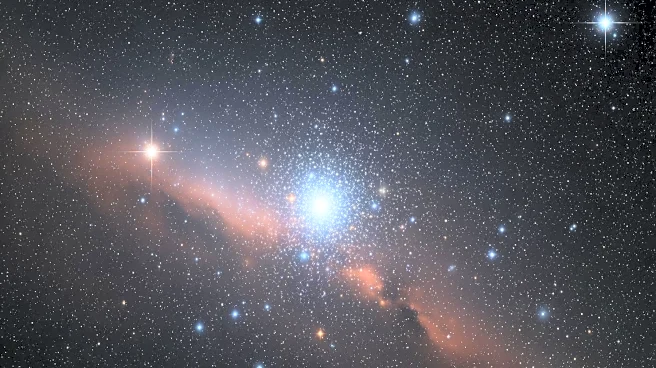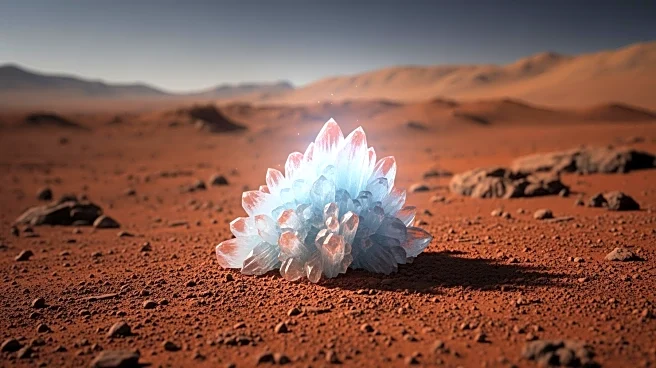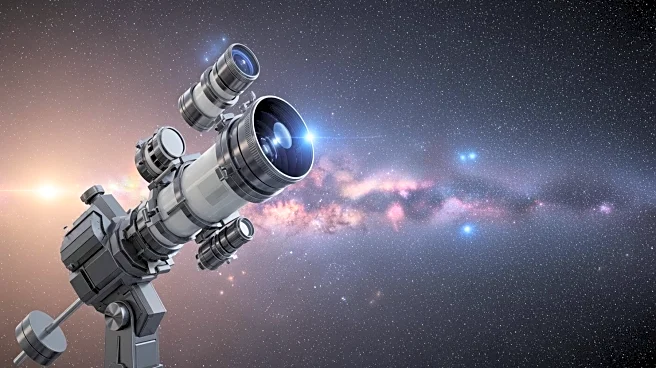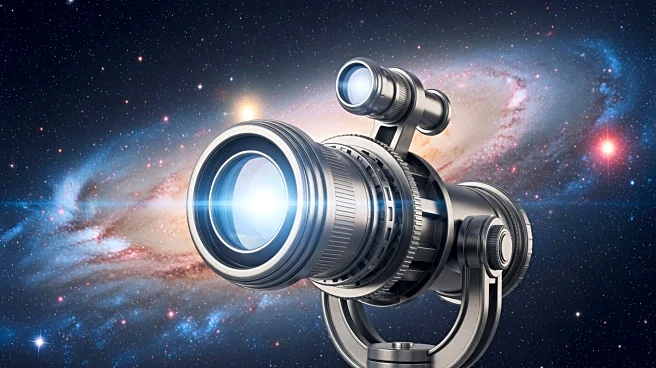What's Happening?
The European Space Agency's Euclid telescope has captured images of young stars forming within the dark cloud LDN 1641, located in the constellation Orion, approximately 1300 light-years from Earth. Using
its infrared instruments, the telescope was able to penetrate the dense cloud of gas and dust, which typically obscures visible light, to reveal a vibrant tapestry of star formation. This observation provides a rare glimpse into the early stages of stellar development, offering valuable insights into the processes that govern star birth and evolution.
Why It's Important?
The ability to observe star formation in such detail enhances our understanding of the life cycle of stars and the conditions necessary for their development. This knowledge is crucial for astrophysics, as it informs theories about the formation of solar systems and the potential for planets to form around new stars. The findings from the Euclid telescope contribute to a broader understanding of the universe's structure and the dynamic processes that shape it. Additionally, studying star formation in different environments helps scientists predict the likelihood of planet formation and the potential for life in other parts of the galaxy.
What's Next?
Further observations using the Euclid telescope and other advanced instruments will continue to explore star-forming regions across the galaxy. These studies aim to map the distribution of young stars and understand the factors influencing their formation. The data collected will be used to refine models of stellar evolution and improve predictions about the formation of planetary systems. As technology advances, astronomers hope to uncover more about the early stages of star and planet formation, providing deeper insights into the origins of our own solar system.











